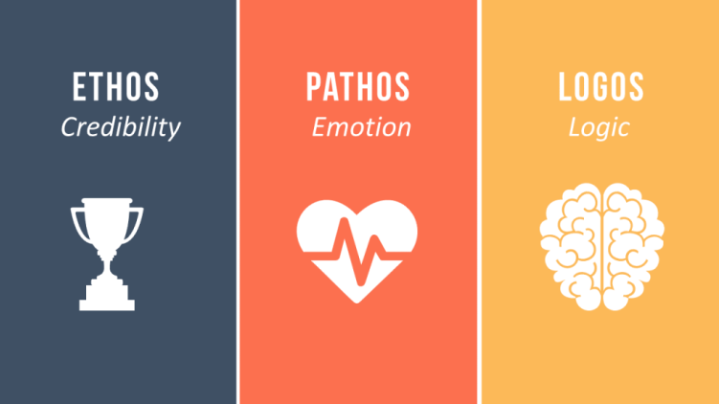Product descriptions are an essential part of your e-commerce store. The way you write them has a huge impact on how customers perceive your brand. For example, you might be showcasing a product that offers exceptional features and benefits. But if the description is poorly written, potential customers might not feel compelled to buy it. However, by using ethos, logos and pathos in your product descriptions, you can increase the chances of converting browsers into buyers. In this post, we’ll explore how to master these persuasive techniques and use them to your advantage.
Ethos: Establish credibility – Ethos is all about establishing credibility and trust with your customers. This is particularly important if your brand is new or relatively unknown. One way to establish credibility is to highlight any relevant qualifications, awards or experience that you have. For example, if you’re selling organic skincare products, you could mention that you have a relevant qualification in chemistry or that you’ve won awards for your products. This will help customers see you as an authority in your industry and feel more confident about buying from you.
Logos: Appeal to logic and reason – Logos involves appealing to your customers’ sense of logic and reason. This is important if you want to convince customers that your product is the best choice for them. One way to use logos in your product descriptions is to highlight the features and benefits of your product. Be specific about what the product does, how it works, and what problems it solves. Use statistics and other data to back up your claims. For example, if you’re selling a weight-loss supplement, you could mention that it’s been clinically proven to help people lose an average of 10lbs in four weeks.
Pathos: Appeal to emotions – Pathos is all about appealing to your customers’ emotions. This is particularly important when you want to create a sense of urgency or convince your customers that they need your product. One way to use pathos in your product descriptions is to focus on the emotional benefits of your product. For example, if you’re selling a luxury watch, you could mention that it’s an investment that will last a lifetime and become a treasured family heirloom. Or if you’re selling a pet food product, you could mention that it’ll help keep their pets healthy, happy and full of life.
Balance your appeals – Remember that ethos, logos and pathos should be used in balance. If you focus too heavily on one of them, you risk coming across as insincere or unconvincing. For example, if you only use ethos and don’t provide any logical or emotional reasons for why someone should buy your product, potential customers might not be persuaded. Similarly, if you only use logos and don’t appeal to any emotions, customers might not feel a personal connection to your product.
Take inspiration from examples – To help you understand how to use ethos, logos and pathos in your product descriptions, it’s always helpful to take inspiration from examples. Look at how other e-commerce stores are using these persuasive techniques in their product descriptions and consider adopting some of their strategies. Analyze what aspects you find most persuasive and incorporate them into your own product descriptions.
To write compelling product descriptions that increase sales on your e-commerce store, you need to master ethos, logos and pathos. Ethos helps you establish credibility, logos appeals to logic and reason, and pathos helps to appeal to customer emotions. By using these persuasive techniques in balance, you improve the chances of converting browsers into buyers. Don’t be afraid to get inspiration from other e-commerce stores, but always put your stamp on your persuasive product descriptions. With these tips in mind, your e-commerce store can stand out and attract more customers than ever before.



